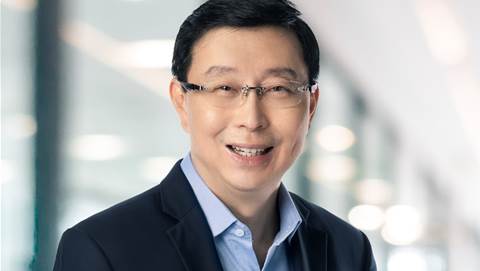As mobile networks evolve with the rise of 5G and upcoming 6G technologies, their transformative impact is reaching far beyond telecommunications, igniting innovation across multiple industries.
In a conversation with iTNews Asia, Julian Gorman, Head of Asia Pacific at GSMA (Global System for Mobile Communications Association) highlights the growing potential of mobile networks and the crucial role they play in driving economic growth, technological advancements, and cybersecurity measures across the globe.
“The evolution of mobile networks is reshaping industries far beyond telecommunications,” Gorman explains.
“With 5G, we are already seeing breakthroughs such as real-time remote surgery, smart factories with automated systems, and precision farming powered by IoT sensors. These advancements are driving efficiency, reducing costs, and improving access to critical services, particularly in underserved regions.”
In the Asia Pacific (APAC) region, mobile networks are expected to significantly contribute to economic growth. According to the GSMA Mobile Economy Asia Pacific 2024 report, by 2030, 5G is projected to generate US$130 billion annually in the region, with key sectors like manufacturing and healthcare standing to benefit the most.
The innovative possibilities from 5G-Advanced and 6G
Looking toward the future, Gorman said the upcoming 5G-advanced (5.5G) technology is a bridge to greater possibilities.
“5G-Advanced will introduce enhanced energy efficiency, ultra-low latency, and new opportunities for industries to embrace more complex applications like autonomous vehicles and immersive extended reality (XR) experiences. These developments will lay the groundwork for 6G, which promises universal, meaningful connectivity at unprecedented speeds,” he added.
Although the industry is excited about these advances, Gorman emphasises that the journey to 6G is still in its infancy. “Our current priority remains on accelerating the accessibility and adoption of 5G to unlock its full potential. This requires collaboration across the ecosystem, investment in infrastructure, and a supportive regulatory environment,” he asserted.
Path towards a connected mobile ecosystem
As mobile technologies proliferate across regions, ensuring seamless interoperability is essential.
Gorman shared examples of GSMA’s efforts in fostering global standardisation through initiatives like the Universal Subscriber Identity Module (USIM) and Rich Communication Services (RCS). These initiatives aim to provide consistent experiences for consumers and businesses, regardless of their operator or location.
He also highlighted initiatives like the Pathfinder Initiative and Network Equipment Security Assurance Scheme (NESAS) that focus on harmonising spectrum allocations and ensuring secure mobile networks worldwide.
“This global approach enables operators and developers to deliver innovative services while ensuring security and reliability across borders,” he added.
Gorman pointed out that the integration of emerging technologies like edge computing, AI, and IoT is also revolutionising the mobile ecosystem. He said one of the other major initiatives is GSMA Open Gateway, which exposes network capabilities through interoperable APIs, and is empowering developers to create new applications across industries.

Operators should focus on investing in scalable, secure infrastructure and exploring new business models. Initiatives like GSMA Open Gateway are providing the foundation for innovation, enabling them to accelerate digital transformation globally.
- Julian Gorman, Head of Asia Pacific at GSMA
Challenges that needs to be addressed
However, with the advent of network slicing and virtualised infrastructures, cybersecurity concerns are mounting. The GSMA is addressing these challenges through collaboration and initiatives like the Fraud and Security Group (FASG) and the Telecommunication Information Sharing and Analysis Center (T-ISAC), which allow members to share threat intelligence and respond proactively.
It has also developed the 5G Cybersecurity Knowledge Base, which offers practical guidance on mitigating risks in 5G networks.
Gorman also highlighted several innovative cybersecurity initiatives from operators, such as Singapore’s National Quantum-Safe Network Plus and AIS’s Digital Health Check in Thailand, which are proactively addressing cyber threats in the region.
As artificial intelligence (AI) becomes integral to both offensive and defensive cybersecurity strategies, Gorman noted its dual role in enhancing network security while also presenting new risks.
To navigate these challenges, he stressed the importance of ethical AI use and transparency and relying on the “Zero Trust” model to secure mobile networks.
“Zero trust involves rigorous authentication, continuous monitoring, and strict access controls across all layers of the network,” Gorman said. However, he acknowledged the challenges of implementing zero trust globally, including legacy system integration and regulatory disparities.
“The GSMA is working to promote secure-by-design principles and global alignment on cybersecurity frameworks to overcome these hurdles and support the adoption of zero trust across mobile networks,” he added.
With breakthroughs in 5G and future advancements in 6G, mobile networks can become key enablers of innovation. However, to fully realise these benefits, Gorman believes it is crucial for the mobile industry to collaborate, invest in secure infrastructures, and adapt to emerging technologies and new cybersecurity challenges.
“The road ahead is promising, but it will require continued innovation, collaboration, and vigilance to ensure a connected, secure, and sustainable future,” he added.









